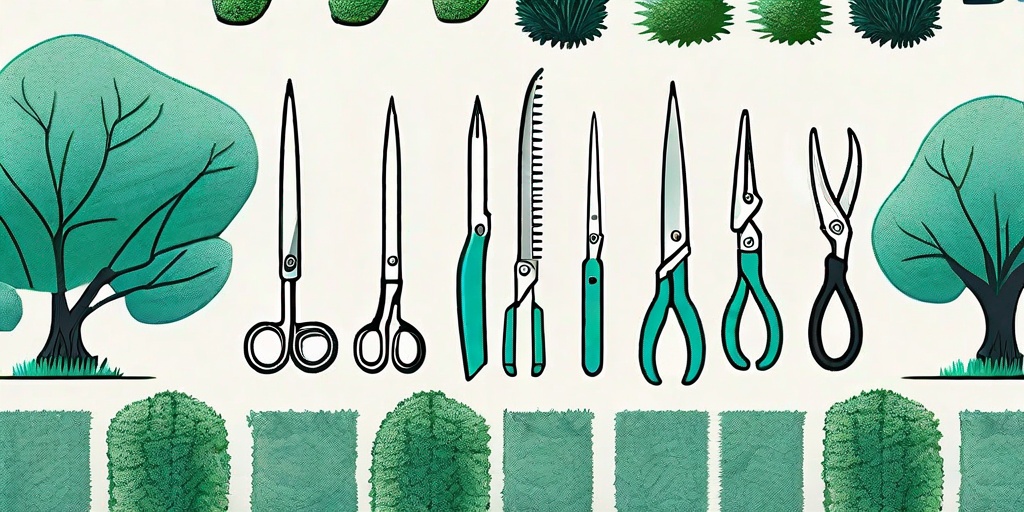
Ah, the beech hedge. A staple in many a garden, and a source of pride for many a green thumb. But, like a petulant child or a demanding boss, it requires a certain amount of care and attention to keep it looking its best. And that's where we come in. We're here to guide you through the process of pruning your beech hedge to perfection, with a dash of humor and a sprinkle of cheekiness thrown in for good measure.
Understanding Your Beech Hedge
Before we dive into the nitty-gritty of pruning, it's important to understand what makes a beech hedge tick. Beech hedges are deciduous plants, which means they lose their leaves in the autumn and grow new ones in the spring. But unlike many other deciduous plants, beech hedges retain their dead leaves throughout the winter, providing a year-round screen of privacy.
These hedges are also known for their dense, compact growth, which makes them ideal for creating a solid, impenetrable barrier. But this density can also make them a bit of a challenge to prune. It's like trying to give a haircut to a particularly shaggy dog - you need to be careful not to cut too much off at once, or you'll end up with a bald spot.
The Importance of Regular Pruning
Regular pruning is essential for maintaining the health and appearance of your beech hedge. It encourages new growth, helps to maintain the hedge's shape, and prevents it from becoming too dense and woody. Think of it as a spa day for your hedge - a little bit of pampering can go a long way.
But when should you prune? Well, the best time to prune a beech hedge is in late summer, when the hedge has finished its main growth spurt for the year. This gives the new growth a chance to harden off before the winter, reducing the risk of frost damage. However, if your hedge is looking a bit unruly, a light trim in the spring can also be beneficial.
Tools of the Trade
Like any job, pruning a beech hedge is easier when you have the right tools. And no, we're not talking about a chainsaw and a can-do attitude. Here's what you'll need:
- A good quality pair of secateurs. These are essential for making clean, precise cuts.
- A hedge trimmer. This is useful for cutting back larger areas of growth, but be careful not to go too wild with it.
- A pruning saw. This is handy for dealing with thicker branches that the secateurs can't handle.
- A sturdy ladder. Unless you're a giant, you'll probably need a ladder to reach the top of the hedge.
- Protective clothing. This includes gloves, safety glasses, and sturdy shoes. Remember, safety first!
Pruning Your Beech Hedge: A Step-by-Step Guide
Now that we've covered the basics, it's time to get down to business. Here's a step-by-step guide to pruning your beech hedge:
- Start by removing any dead or diseased wood. This will help to prevent the spread of disease and improve the overall health of the hedge.
- Next, trim the sides of the hedge. Start from the bottom and work your way up, cutting at a slight angle so that the base of the hedge is wider than the top. This helps to ensure that the lower parts of the hedge receive enough light.
- Now it's time to tackle the top of the hedge. Try to keep the top flat and level - unless you're feeling particularly artistic, in which case, go wild!
- Finally, clean up any loose leaves or branches. Not only does this make your garden look tidier, but it also helps to prevent the spread of disease.
Frequently Asked Questions
How often should I prune my beech hedge?
As a general rule, you should prune your beech hedge once a year, in late summer. However, if your hedge is looking a bit unruly, a light trim in the spring can also be beneficial.
Can I prune my beech hedge in the winter?
It's best to avoid pruning your beech hedge in the winter, as this can make it more susceptible to frost damage. Stick to late summer for the best results.
What should I do if my beech hedge is looking sparse?
If your beech hedge is looking a bit sparse, it may need a more drastic prune to encourage new growth. Cut back the hedge to within 60cm of the ground, and wait for the new shoots to appear. Patience is key here - it may take a couple of years for the hedge to fully recover.
Conclusion
Pruning a beech hedge may seem like a daunting task, but with the right tools and a bit of know-how, it's a breeze. So roll up your sleeves, grab your secateurs, and get pruning. Your beech hedge will thank you for it.
And remember, a well-pruned beech hedge is a happy beech hedge. So here's to lush, healthy gardens and perfectly pruned hedges. Happy gardening!















